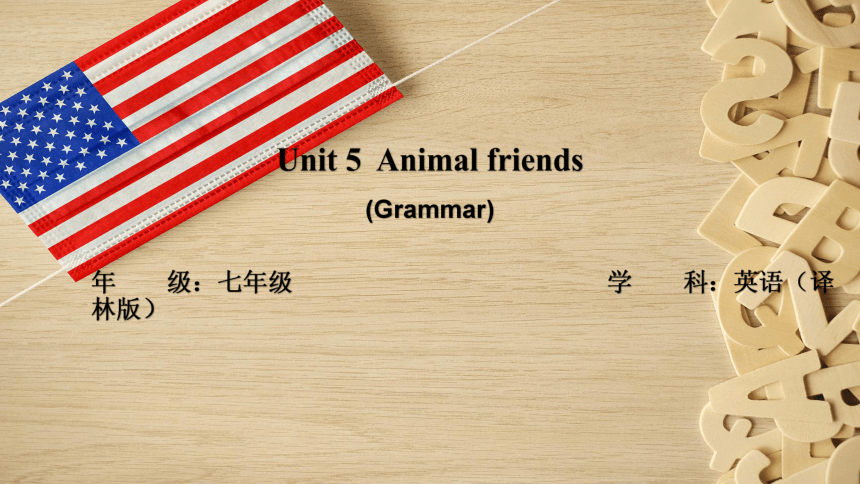(
课件网) Unit 5 Animal friends (Grammar) 年 级:七年级 学 科:英语(译林版) Free talk What do you know about these animals Group 1: * He can do wonderful tricks. * She has soft fur and a pair of blue eyes. * She likes to run after butterflies and climb tall trees. * Rabbits have long ears. Group 2: * The dog is clever. * The cat is cute. * When I’m lonely, she’s always there. * When I need a friend or feel sad, she is always by my side. * Rabbits’ ears are long. * He can do wonderful tricks. * She has soft fur and a pair of blue eyes. * Rabbits have long ears. * He can do tricks. * She has fur and a pair of eyes. * Rabbits have ears. Read and think What do we use the adjectives for We use the adjectives to express feelings and make the sentences more interesting. Read and think Where are the adjectives in the two groups of sentences Before the nouns After the linking verbs Divide the adjectives into two groups according to their positions. Before the nouns After the linking verbs long ears orange cat cute cat ... are long. ... looks cute. ... is orange. Read and fill before after Tip: Go through “Grammar check” on page 145. Read and complete Divide the adjectives into different groups according to what they describe. Looks Feelings Characteristics brown happy, hungry, tired clever, special Read and complete brown tired hungry special clever happy brown tired hungry special clever happy Add more adjectives to the two passages to make them more vivid. little small cute and lively Read and talk Make sentences about them, using adjectives. A tiny yellow bee is flying around yellow flowers. An orange cat is sitting there. A curious boy is watching a beautiful goldfish inside the tank. A man is walking his brown dog. What can the animals in the pictures do The bee can make less than one gram of honey in its life. The cat can jump high and climb trees. The goldfish can swim. The dog can do wonderful tricks. Can means “be able to do something” or “know how to do something” at present. —Could your dog do wonderful tricks when he was young —No, he couldn’t. But he can do them now. Could means “be able to do something” or “know how to do something” in the past. Read and finish 4 Read and finish Where is can in the yes-no questions At the beginning of a sentence. Sum up Modal verb Function Example Can Talk about present ability * The parrot can talk. * The parrot cannot/can’t talk. * —Can your parrot talk —Yes, she can./No, she cannot./No, she can’t. Could Talk about ability in the past * The cat could jump really high when she was young. * The cat could not/couldn’t jump really high when she was young. * —Could your cat jump really high when she was young —Yes, she could./No, she could not./No, she couldn’t. What do could and can mean in this group politely ask for permission to do something give permission How can we deny permission No, … cannot./No, … can’t./Sorry, I’m af ... ...

